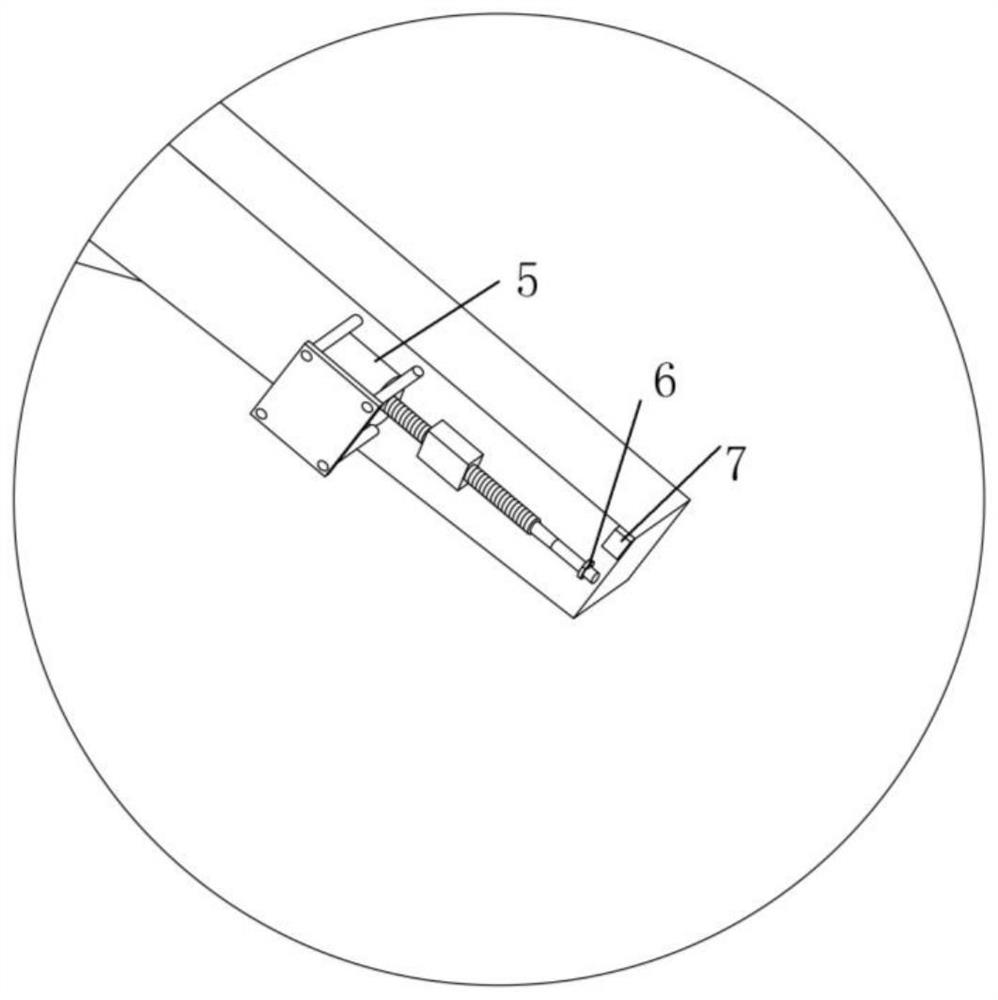Medical rescue robot, system and method for wounded person poisoned in high-toxicity environment
A rescue robot and highly toxic technology, applied in the field of military artificial intelligence medical devices, can solve problems such as inability to complete first aid injection, and achieve the effect of improving the efficiency of accident handling and avoiding chemical hazards
- Summary
- Abstract
- Description
- Claims
- Application Information
AI Technical Summary
Problems solved by technology
Method used
Image
Examples
Embodiment 1
[0040] Embodiment 1 discloses a medical rescue robot for poisoned wounded in a highly toxic environment, such as figure 1 As shown, it includes a robot body 1, a walking mechanism 2, an image acquisition module 3, a multi-joint actuator 4 and an intelligent controller.
[0041] The robot body 1 is provided with a walking mechanism 2, an image acquisition module 3 and a multi-joint actuator 4. The image acquisition module 3 is used to collect high-toxic environment information, and the intelligent controller controls the walking mechanism 2 to reach the vicinity of the poisoned wounded to carry out rescue operations;
[0042] The multi-joint actuator 4 is provided with a micro-screw stepping motor 5, an injection needle holding device 6 and a pressure sensor 7, the injection needle holding device 6 is arranged at the front end of the micro-screw stepping motor 5, and the injection needle holding device 6 It is used to hold the injection needle, and when the thrust screw of the ...
Embodiment 2
[0058] Embodiment 2 discloses a medical rescue system for the wounded in a highly toxic environment, such as figure 2 As shown, including the human-computer interaction device and the above-mentioned robot.
[0059] The human-computer interaction device sends control commands to the robot to realize the motion control and rescue operations of the robot;
[0060] The human-computer interaction device assists in the rescue operation by sending the on-site environment and wounded information acquired by the sensors carried by the robot.
[0061] In this embodiment, the human-computer interaction device can be specifically configured as a remote control terminal, and a wired or wireless communication method is used between the remote control terminal and the robot; the robot receives instructions from the remote control terminal and controls related equipment to perform corresponding actions. At the same time, the collected information around the robot is fed back to the remote ...
Embodiment 3
[0067] Example 3, a medical rescue method for the poisoned wounded in a highly toxic environment, which effectively solves the problem of first aid injection of anti-drugs for the poisoned wounded in a highly toxic environment, and can accurately locate the wounded and guide the injection robot during the entire injection process. include:
[0068] After the robot is powered on, perform system initialization settings to determine whether the communication is valid;
[0069] After the initialization is completed, receive the control command signal of the human-computer interaction device;
[0070] Analyze the control instructions, and send the analyzed instructions to the relevant drivers to realize the motion control of the robot;
[0071] Utilize the image acquisition module 3 to collect the image data of the target area and transmit it to the intelligent controller;
[0072] The intelligent controller performs the first identification on the image data, and determines the ...
PUM
 Login to View More
Login to View More Abstract
Description
Claims
Application Information
 Login to View More
Login to View More - R&D
- Intellectual Property
- Life Sciences
- Materials
- Tech Scout
- Unparalleled Data Quality
- Higher Quality Content
- 60% Fewer Hallucinations
Browse by: Latest US Patents, China's latest patents, Technical Efficacy Thesaurus, Application Domain, Technology Topic, Popular Technical Reports.
© 2025 PatSnap. All rights reserved.Legal|Privacy policy|Modern Slavery Act Transparency Statement|Sitemap|About US| Contact US: help@patsnap.com



